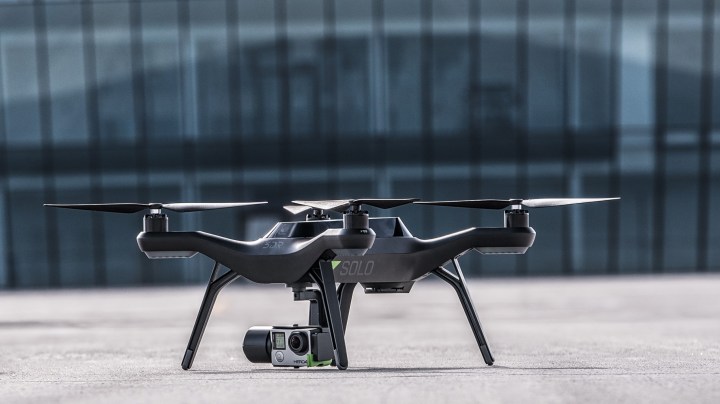
3DR is working with AirMap, a startup that specializes in providing accurate information about airspace usage so drones and other unmanned aerial vehicles can fly without running afoul of the law. The software is capable of detecting airports, restricted special use airspace like that over military bases, and other prohibited areas such as those surrounding major attractions such as Disneyland and Disneyworld. The map data is updated in real-time, allowing operators to avoid even temporary no-fly sites that are enacted during emergency situations, political events and more.
These new features will be baked directly into the Solo drone software, making it easy for drone operators to fly safely without having to consult a third-party source for airspace information. Rather than leave the operator trying to guess whether they are approaching a nearby airport or other restricted area, the AirMap-equipped Solo drone will alert the operator in advance. This give operators the chance to quickly open a map of the local airspace and choose a proper course of travel that will avoid the restricted and warning areas.
The rollout of this new mapping feature will happen gradually, with future versions of the Solo drone receiving more detailed airspace information from AirMap with each subsequent update. This information eventually will be expanded to include federal, state and even local airspace information. The team at 3DR hopes to deliver the first version of the AirMap-equipped software before the holiday season.
3DR isn’t the only drone manufacturer working with AirMap to improve the safety performance of their drones. DJI also recently announced its was incorporating AirMap data into its new Geospatial Environment Online (GEO) system. DJI’s geofencing solution goes a step further than 3DR’s by preventing a drone from flying into or taking off from an area that is restricted due to safety or security concerns. Operators who need access to these sensitive areas and have permission from the property’s owners can self-authorize flights using a verified DJI account. Similar to 3DR, DJI hopes to roll out its new mapping system sometime in December.



